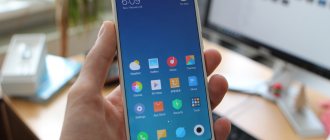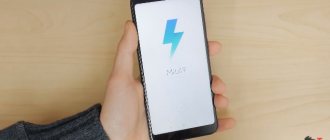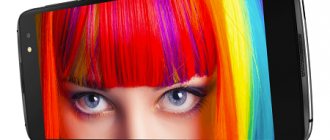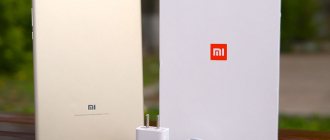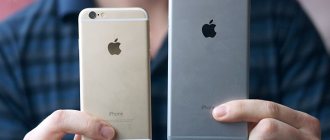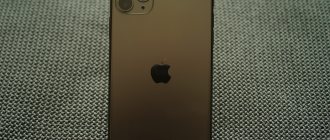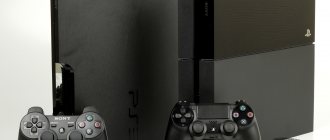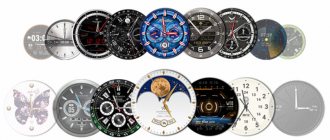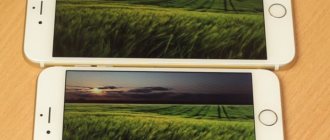Specifications
| Frame | Aluminum, surgical steel, glass |
| Colors | Silver, space gray, gold |
| Dimensions | iPhone XS – 143.6 x 70.9 x 7.7 mm iPhone XS Max – 157.5 x 77.4 x 7.7 mm |
| Weight | iPhone XS - 177 g iPhone XS Max - 208 g |
| Display | iPhone XS - 5.8 inches, 2436 × 1125 pixels, OLED (Super Retina HD), 458 ppi iPhone XS Max - 6.5 inches, 2688 × 1242 pixels, OLED (Super Retina HD), 458 ppi |
| Platform | A12 Bionic |
| RAM | 4 GB |
| Built-in memory | 64/256/512 GB |
| Cameras | Main – 12 + 12 MP, front – 7 MP |
| Shooting video | With up to 4K resolution at 60 FPS and slo-mo video at up to 1080p at 240 FPS |
| Degree of protection | IP68 |
| SIM card | nanoSIM + e-SIM (not available in Russia) |
| Wireless interfaces | Wi-Fi 802.11 a/b/g/n/ac, Bluetooth 5.0, GPS, NFC, GPS |
| Connectors | Lightning |
| Sensors | Face ID, accelerometer, gyroscope, proximity sensor, light sensor, barometer |
| Unlock | Face ID, PIN code |
| operating system | iOS 12 |
| Battery | iPhone XS - 2,658 mAh iPhone XS Max - 3,174 mAh |
Design
If you carry a 5.5-inch iPhone 7 Plus in your pocket for more than a year and then upgrade to a 5.8-inch iPhone X, the iPhone XS Max will seem familiar. Familiar, but not great. The size of this device is approximately the same as the iPhone 7 Plus and iPhone 8 Plus, but the lack of frames allowed the screen to be larger.
However, due to the lack of frames, we had to lose the Home button. This smartphone is clearly not for wearing in skinny jeans and not for use with one hand. By comparison, the Galaxy Note 9 is lighter, but also longer and slightly thicker.
The 5.8-inch iPhone XS is better suited for one-handed use. It is shorter and narrower than the Max model and weighs less.
Related posts:
- Review of the Huawei P40 Lite smartphone
- Review of the OnePlus 8 smartphone
- Review of the Samsung Galaxy Tab S6 Lite tablet
- Oppo Find X2 Pro smartphone review
- Review of Xiaomi Redmi Note 9 and Note 9 Pro smartphones
Whichever option you choose, the gold version of the case looks great. The glass back surface shimmers in the light, changing shades at different angles. The shining color matches the color of stainless steel. The developers promise the most durable glass among modern smartphones, but no one has tested this claim yet. Last year, the iPhone X came in third in durability tests.
Protection against water and dust has been enhanced and is now IP68 certified. Smartphones can survive immersion in 2 m of water for half an hour. Last year's devices have IP67 protection.
Design and ergonomics
The iPhone XS case is made of surgical steel, aluminum and glass, which Apple calls "the most durable." It’s hard to argue with this: the iPhone X with similar glass survived more than one fall, and somehow even crashed to the floor in a crowd that trampled on it quite well. There are a couple of scratches on the case. That's all. Drop tests are not needed: the new iPhones are reliable and almost unbreakable, you can even feel it tactilely.
But the glass still collects small scratches and other marks over time—tested after almost a year of using the iPhone X.
iPhone X case after a year of use without a case
You can protect yourself from these marks using covers. But with them, the iPhone becomes a little thicker, the feeling of the absence of frames on the sides disappears, and only the display, the bottom edge and the camera module remain visible. When your smartphone is beautiful, you don’t want to put a case on it at all.
iPhone XS is available in three colors: silver, space gray and gold. That's what they are called on the Apple website. We are used to putting it simply: there is white, black and a new gold color option, which is actually golden pink. We got the XS in exactly this color. And white XS Max.
An iPhone in gold looks especially advantageous compared to other colors. Firstly, this is something new - with such a modification, everyone will know that you are not holding last year’s Apple smartphone in your hands. And secondly, it is gender neutral. Gold, pink, but not at all feminine. It seems that the prank was a success - we are expecting a lot of budget Chinese with “bangs” in a new color.
There are almost no external differences between the mini version of the iPhone XS and the “ten”. The new model has two new antenna lines at the top and bottom, and the camera module has changed slightly. Moreover, the latter is discovered only when trying to try on cases from an iPhone XS on an iPhone X or vice versa. They fit, but fall out of the ideal position in the camera area by a couple of millimeters. You won’t be able to ignore this nuance—you’ll have to buy a new case for the new iPhone.
Case from iPhone XS to iPhone X. This gap on the right and under the camera module is a perfectionist's hell
The XS Max is identical in size to the 8 Plus - it's immediately clear that this version is created for those who are used to larger iPhones.
From left to right: X, XS, 8 Plus, XS Max
The XS weighs almost identically to the X, and the XS Max weighs almost identically to the 8 Plus. You won't have to get used to it. The maxi version of the new iPhone is distinguished by its framelessness, but the classic XS is almost indistinguishable from the “ten”. Looks, dimensions, weight - everything is the same.
Price
Let's start with the most pressing question.
It's no secret that the price even for the minimum versions of the iPhone Xs and Xs Max is at least impressive. Compared to some Xiaomi Mi8 (an excellent device, by the way), the “ten-es” is prohibitively expensive. You immediately want to be indignant, break something, leave an angry comment online about officials, Trump and your drunk neighbor. But let's not get too excited. Let's make an analogy. And the automobile market will come to our aid.
Xiaomi Mi8
There is such a wonderful car - Nissan X-Trail. Now it costs 1.8 million rubles in the top configuration. For this money we get a 2.5-liter engine and 171 horses under the hood, a leather interior, a bunch of sophisticated driving systems, a million sensors, good music, and so on. The car is modern, charged and looks great on the road.
And also found in nature, for example, BMW X6. For him in the top you will have to pay 6.2 million rubles. For the same money you can buy 3.5 pieces of “hitril”.
I hope it's clear where I'm going with this.
If you don't have 6 million rubles, buy a Nissan and enjoy life. Eat? So great. Take the X6 and drive to your heart's content.
It's the same with the iPhone Xs Max. Do you have 128 thousand rubles? Take it and be happy. This is an excellent, modern, very nice smartphone. By the way, the full price list is under the cut.
| Hidden text | SelectExpand> | |||
| 64 GB | 256 GB | 512 GB | ||
| iPhone Xs Max | RUB 96,990 / $1099 | RUB 109,990 / $1249 | RUB 127,990 / $1449 | |
Don't have an extra hundred kilorubles? Then buy a Xiaomi Mi8 for 35 thousand and do everything the same on it... turn on the climate control, listen to music, step on the gas, and so on. Only it will be Mi8, not BMW X6.
Now that we have figured out the price, let off steam, and made conclusions, let’s move on directly to the review of the iPhone Xs Max.
Content:
— Differences — Exterior — Display — Characteristics — Equipment — Performance — Cameras — Video recording — Sound — Autonomy — Problems — Who to buy? — Bottom line
Screen and sound
The new models have the same OLED display as the “ten”: Super Retina HD with a density of 458 pixels per inch.
The screens differ in size: the XS has a 5.8-inch display with a resolution of 2,436 × 1,125 pixels, the XS Max has a 6.5-inch display with a resolution of 2,688 × 1,242 pixels. The latter is the largest screen in iPhone history. Dimensions are calculated without taking into account the cutout for sensors.
The screen is contrasty and has pleasant color rendering. The picture is readable even in bright sunlight.
Software features are in place: True Tone, which adjusts the color temperature of the picture to the environment, and Night Shift, which shifts colors to the warmer end of the spectrum. The latter mode turns on in the evening (this can be configured) and makes the image on the screen more pleasant and calming.
Based on the combination of hardware and software characteristics, the screens of the new iPhones could be called one of the best. The battle of flagships in this territory has long been taking place somewhere in the realm of subtle technical nuances. In my opinion, the XS's display is as good as Samsung's latest Super AMOLED display. But not better either.
This time, Apple tried even more to turn the iPhone into a device for watching movies. High dynamic range standards still supported: HDR10 and Dolby Vision. Films in these formats can be purchased on iTunes, Netflix, Amediateka or other online cinemas. But one of the main evolutionary changes has undergone dynamics.
The sound became a little more voluminous. This is noticeable if you place your smartphone horizontally and turn on some track or video. The panorama especially began to stand out on the XS Max with a large distance between the speakers. The volume margin remained at approximately the same level, readability and detail were not lost.
Is it worth watching movies on iPhone XS? Of course not. Here I agree with director David Lynch: small screens and smartphone speakers are not designed for this. But for watching sitcoms and YouTube videos, the new iPhones are great.
Smartphones have become more powerful and better screens. How much?
Further information appeared that the new product received 6 GB of RAM. But after a while it was refuted. Therefore, we will receive accurate information only on September 20, the day sales start.
Is RAM still relevant in iOS? I just noticed one scenario with the iPhoneXSMax and its 4 GB of RAM. When typing a lot of text in Notes and periodically switching to the Safari browser, returning to Notes takes you to the beginning of the text. An unpleasant little thing, but it happens. If you replace “notes” in the text with some kind of game, then a similar result is possible - the game will get a restart.
Having a PS4 Pro makes it difficult to play any games on your phone for a long time, since the difference in quality between console and mobile games is huge. Although the phones have mega-modern processors. For what? The question is rhetorical.
The next thing that changed was the screen. Was Super Retina HD, became Super Retina XDR. Marketing aside, the changes look like this:
The contrast was 1,000,000:1, now it is 2 times more - 2,000,000:1.
Brightness was increased from 625 to 800 cd/m2.
Who will notice these changes the most? Vacationers at sea. The only thing that logically follows is that the phone will heat up even more?! We'll find out in the summer.
Alas, the screen changes turned out to be not only positive, but also negative . After a year I got used to 3D Touch. But now she's gone. Will the squad notice the loss of a soldier? Time will tell. Now, I always notice the lack of 3D Touch in the iPad Pro 9.7.
Next, we traditionally improved the processor . It supposedly became a third more powerful. Just above I mentioned mobile games and the gap between them and the console. Therefore, this year I remain with my traditional opinion: increasing processor power is marketing.
About the same as selling 8K TVs without even 4K content. Movies in 4K are few and far between, and if you compare the same 4K movie on a 4K TV and a 1080p movie on a 1080p TV, you can get very sad conclusions. Marketing rules the world.
Well, traditionally, the real processor gain will not be 30, but 3-7% . Here the picture is the same as with the MacBookPro.
Camera
Two lenses are responsible for taking pictures: a wide-angle lens with an aperture of ƒ/1.8 and a telephoto lens with an aperture of ƒ/2.4. The resolution of both is 12 megapixels.
The pixel area has increased, but in general terms the iPhone XS camera has retained the configuration of its predecessor. At the same time, she films in a completely different way: the computing power of the A12 Bionic and the Neural Engine system have an impact. What this means is not particularly clear in words, so we will look at it using examples.
Firstly, the camera now shoots in Smart HDR mode by default. The width of the dynamic range is achieved by instantly taking several photographs and combining them into one - with the dark areas of the image worked out and the light areas not overexposed. Here are a couple of photos taken on the iPhone XS in natural light:
In this scenario, the evolution of the iPhone camera can be seen least clearly. It is noticeable that the shooting angle has become a little wider.
But when comparing cameras in the dark, my iPhone X failed miserably: the “ten” catches glare better, although this could not be due to the absolute cleanliness of the lenses. The same applies to landscapes with a minimum of light: there is less noise in pictures with the XS.
Let's move on to portraits. Now they can change the depth of field by changing the aperture value during post-processing. Anticipating the comments of the indignant: yes, we know that this has already happened in other smartphones. It doesn't matter. The important thing is that by adjusting the background blur level and tinkering a little with standard filters, you can take photos that your friends will turn into avatars.
The old problems of the portrait mode have not gone away: in the “Lighting Simulation” mode, I still have difficulty taking a selfie with a face without corpse tones and with the correct clipping. Well, out of 20–30 portraits, there will always be a couple with a piece of the background that comes into focus, or vice versa. All the roughness is interrupted by the bold plus from the previous paragraph: it’s easy to take a photo of a friend with the main camera of the XS so that he urgently asks to send the photo in messenger.
Example of failed clipping: the area of the background between the hand and the face came into focus as a close object
In my opinion, things are a little worse with the front camera. Now the pictures from it have a slightly different white balance - they have become less yellow. The edges lost their sharpness, and the colors lost a little in contrast. The photos have become a little more honest—that’s not why we, not the most beautiful people, love selfie cameras. On the left is the result of the iPhone XS, on the right is the X.
However, this is a matter of taste. Even in our not very large editorial office, opinions about the front camera of the new iPhone are divided.
It would seem that all modern flagships shoot almost equally well, there is nothing to surprise here. But Apple has done it again.
Publishing a couple of pictures on social networks - and subscribers like it, envious people write caustic comments, friends order photo sessions. You are on horseback.
New features have appeared in video: the camera now shoots videos in HDR when shooting at a frame rate of up to 30 FPS, and also records sound in stereo.
We have not yet figured out why the average user needs this, but it works. On-location 4K shooting function.
Pocket film studio
I rarely make videos, but it happens. These are mainly diary entries from memory, after all, video and photography are too different genres, and I am a photographer. It's nice to realize that in addition to a camera, you also have a video camera in your pocket. The iPhone Xs Max records excellent video, especially on a sunny day, although it does well in low light. When recording video at 30 frames per second, the camera uses Smart-HDR mode.
Optical stabilization makes it easy and relaxed to shoot video handheld, resulting in a stable, smooth image.
iPhone Xs Max supports 4K shooting at 60 frames per second and records stereo audio using four built-in microphones.
For review, I edited a small sketch and realized that if I decide to really get involved in video, then a mobile Steadic would come in handy for handheld shooting.
I recommend editing videos using the LumaFusion app for iPhone and iPad. Six tracks – 3 for audio/video/photo/titles, and 3 for sound. Within a track, clips can be cut into fragments, dragged, and the sound changed. Title editor, breakpoints and sliding snaps, etc. A full range of professional video editing tools.
Performance
The iPhone XS has a new seven-nanometer A12 Bionic processor with Neural Engine. Now the battery is used more efficiently, Face ID responds faster, games look almost like on consoles (only smaller), and augmented reality applications work at full capacity.
In almost a year of using the iPhone X, I have never had any complaints about its performance. Perhaps because I didn't really use augmented reality apps or play resource-intensive games. The performance of the XS did not produce a “wow effect” on me, but only because everything worked perfectly with the previous model.
So that this point doesn’t look completely boring, I’ll give a report from AnTuTu. Here you can see that the XS left the “ten” far behind and slightly outperformed the most powerful iPads in performance.
Our solution: Smart RAW
Fortunately, this can be changed.
After the release of the iPhone XS, we worked nights and weekends to come up with a solution to get the most out of the larger sensor and its deeper pixels. We made Smart RAW, a feature that takes advantage of the new touch technology in iPhone XS to take better RAW photos than iPhone X could. Smart RAW doesn't use any of the Smart HDR features—in fact, it avoids them so you barely have to. remove noise.
Now that we've gotten past the iPhone XS's exposure issues, there's a surprising amount of detail to be found in Smart RAW files. Let's look at a photo from the First Aid Kit concert and compare options with and without Smart RAW:
Without Smart RAW
Smart RAW
Much better than the iPhone X. Here are some comparisons of RAW images taken from the iPhone XS and iPhone X.
The results are amazing: less noise, more detail.
The best feature of Smart RAW: By fine-tuning the iPhone XS sensor, we get more quality in our images than ever before. There's a surprising increase in resolution and quality when you move from iPhone X to iPhone XS.
Smart RAW vs Smart HDR
You might be wondering how this feature compares to Smart HDR, since shooting in RAW means no HDR. I took a photo with difficult exposure conditions using Smart HDR and our new RAW:
Smart HDR
RAW
Without editing they turn out almost identical; perhaps Smart HDR is a little better.
But RAW is just the starting point. Here are the same photos after editing:
Smart HDR
RAW after editing
We didn't get the same dynamic range as Smart HDR - notice how the sky turns bluer there - but we came pretty close. I like the way RAW looks better after editing - a little more in the morning.
But the main advantage: the details.
I prefer to shoot in RAW for the clarity of detail, and the iPhone XS, with its larger pixels, has more detail than before. A great example is the leaves of the tree at the top right:
And this happens with most photographs. Shooting in RAW means you have to work on the shot later, but the results are often worth it. Of course, there is a lot of light in this image - you need to check what you get after sunset.
In low-light situations, there is a trade-off. The less light, the more noise. The iPhone XS, together with Smart HDR in the standard shooting application, copes well with such photographs, but sometimes it does not produce the clearest photos.
Photos with insufficient light will always have a lot of noise. Smart HDR aggressively hides it, losing detail. If you need more detail and don't mind a little noise, try our Smart RAW:
Left Halide Smart RAW, right iPhone Smart HDR
There is noise in the shadows and skin looks rougher due to less blurring of highlights and darks, but the detail is amazing compared to images taken in normal mode.
Smart RAW is still in testing mode and will need to gather a lot of photographic evidence that it works perfectly in all situations.
Autonomy
Apple claims the XS lasts half an hour longer than the iPhone X, and the XS Max lasts one and a half hours longer. Battery capacities are 2,658 mAh and 3,174 mAh, respectively.
| iPhone XS | iPhone XS Max | |
| During conversation (with wireless headset) | until 20 o'clock | up to 25 hours |
| When working on the Internet | till 12 o'clock | until 13 o'clock |
| When playing video over a wireless network | until 14 o'clock | until 15 o'clock |
| When playing audio over a wireless network | up to 60 hours | up to 65 hours |
We didn't have time to test the new iPhones in all of these scenarios, but the stated figures are similar to the truth. XS should be enough even for a very active day - this is the most important thing.
If you don’t need the most powerful iPhone and you always try to choose the longest-lasting flagship, wait until XR sales start. It should hold a charge a little longer than the XS Max - up to 25 hours of talk time, up to 15 when surfing the Internet, up to 16 when playing video and up to 65 for audio.
Connection
iPhone X and iPhone XS Max support Gigabit LTE. Additional antennas provide access to 4x4 MIMO. Testing showed a maximum incoming connection speed of 103 Mbps on the iPhone XS and 96.9 Mbps on the iPhone XS Max. The average speed was 67.2 and 58.2 Mbit/s, respectively. Upstream speeds averaged 25.4 Mbps on the iPhone XS Max and 18.6 Mbps on the iPhone XS. By comparison, the iPhone X averages 15.5 Mbps down and 6 Mbps up. Of course, these speeds largely depend on the telecom operator and the specific tariff on it. In this case we are talking about the American telecom operator E-Mobile.
For the first time, iPhone supports dual SIM cards. True, one of them is an eSIM electronic card; they are supported in a very small number of countries. In China, new iPhones will be released with support for two real SIM cards.
How is the iPhone XS different from the iPhone X?
We're comparing Apple's new smartphones to the iPhone X because it was their predecessor—the XS inherited everything that's important from it. If the above comparisons weren't always clear, read our detailed iPhone X review.
This time Apple showed a pack of evolutionary improvements. And not a single one that turns, excuse me, the game, as is the case with the “unibrow” or Face ID.
The only thing that looks like a serious innovation is support for a second SIM card. Let us remind you that the e-SIM standard is not supported in Russia, and the version with a physical additional slot is sold only in China. Bringing a smartphone from there is a dubious idea. The Asian version may not have a lot of other functions. We will probably hear some feedback from those who decided to take on this adventure very soon.
Here is a list of what has changed since the “ten”:
- A memory capacity of 512 GB appeared.
- A modification in gold color has become available.
- The appearance has not changed enough to be noticeable, but enough for you to go to the store for a new case.
- The level of protection has increased to IP68, and now you can dive deeper and stay underwater longer with your iPhone.
- The sound became more voluminous.
- The camera has become better able to adapt to low light, highlighting dark areas and darkening light areas of the photo.
- A function has been added to control the depth of field during post-processing of portraits.
- The software operation of the front camera has changed.
- The smartphone began to work a little longer.
iPhone XR - Face ID, sound, battery life and more
As for Face ID, facial recognition has accelerated, and significantly. The set of sensors for facial recognition has not changed, but the processor has changed. In principle, all the innovations in the new iPhone XS are tied to the new chip. Machine learning, a much faster neural unit, billions of transistors and trillions of operations per second - now all this makes Face ID not only smarter, more secure, but also faster.
At the presentation, Apple representatives said that now headphones are not needed for the iPhone at home - the stereo sound from the speakers is already gorgeous. This is true and you can enjoy watching a movie without a headset, because there is stereo support in Dolby Digital Plus mode.
The autonomy of the smartphone will be approximately at the same level as the iPhone X, since the battery capacity, which was not named, is unlikely to have increased. However, Apple claims a lifespan of 30 minutes longer than the iPhone X. Fast charging is available and can charge the battery to 50% in just 30 minutes. No need to do wireless charging either.
How is the iPhone XS different from the iPhone XS Max?
Everything is quite simple here. They do not differ in anything except screen size. Although we did discover something: when positioned horizontally, XS Max shows the desktop version of the browser, while XS still displays the mobile version. This is all.
On the left is the iPhone XS, on the right is the XS Max. On the maxi version, Lifehacker materials are shown in two columns - just like in the desktop version of Safari
Appearance
Externally, the new product for 2020 is almost identical to the iPhone X. The same frameless screen, rounded corners and the same design - two glass panels connected by a steel frame. The only difference is that it has become significantly larger. Manufacturers increased the length of the iPhone XS Max by 13.9 mm, the width by 7.5 mm, and the weight by 34 g. The flagship turned out to be large and heavy: 157.5 x 77.4 mm and weighing 208 grams. The color range of cases has also expanded; the smartphone can be chosen in one of three options (golden color has been added to silver and gray).

